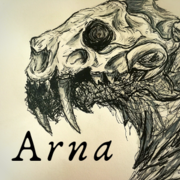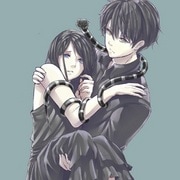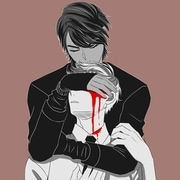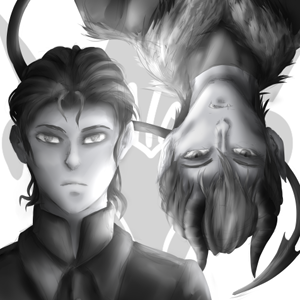Humanity has survived the fallout.
What the fallout was, you ask?
It really doesn't matter, in detail. It was everything we were warned about when the Doomsday Clock was making its forward march to the stroke of midnight.
But we prevailed, after we tried to destroy each other in the wake of our own planet using everything in its disposal to get rid of us. Once the dust had settled and humanity took in its destructive aftermath, the seemingly unthinkable happened and we resolved to band together, to do and be better.
Humanity has set aside the blame for the disaster and the conflicts that in hindsight all seemed like petty squabbles and went on to rebuild a new society and new culture in what became just a little more than a wasteland.
Living in the bare-bones of near empty cities, reduced from millions of residents to hundreds at best in some places, the surviving humans initiated an era of communal foraging, farming and hunting, just like those 'good old days' everyone was raving about before it all went down. It took some trial and error, but the surviving infrastructure was sturdy and functional enough to allow basic necessities and prevent mass death from infection and dehydration.
Things were rough, as communications and power took several decades more to be usable again, enabling humans to find each other across the globe once again.
Normalcy was slowly being achieved.
Better.
More peaceful.
But peace doesn't make for an interesting story.
Nor is it the end of this one.
We thought we had it good, and compared to the desolate, godforsaken land it could have been, it probably was. But even if us survivors felt cautiously optimistic, apparently it was bad enough to draw the attention of the denizens of the one place that we dared to compare our situation to.
As it turns out, Hell – yes, the place of fire and brimstone full of sinners we were all severely warned about ending up in – has its limits, both in capacity and tolerance. There are some acts even Hell and its rulers won't accept from its dwellers, and while the most dire ones are probably taken care of on site, for some death is too much of a merciful end. Eternal suffering is their whole thing, after all.
And furthermore, it turned out that they were just as aware of us as we assumed their existence, and even decided to make themselves known. Although, perhaps not expecting us to have our bearings by the time they acted.
As humanity was recovering, practically rising from its own ashes, Hell saw our struggling landscape as the perfect place to dump their worst of the worst at – according to their own standards.
It was unnoticeable at first, frankly. To prevent this planet-turned-prison-colony from becoming Hell 2.0, demons exiled there have been stripped of most of their powers and reduced to a more human-like form, although still greatly distinguishable from real humans. But even with their demonic powers dialed down to next to nothing, they were still formidable opponents for us humans.
And some, in their frustration at their exile, became hostile and violent, wreaking havoc in an already weakened and struggling population until eventually subdued or killed, causing a lot of damage by the time their rampage was contained. But if humanity has proven anything in the wake of the disasters that plagued it, it is that innovation grows in the face of a common adversary.
Once getting over and collectively accepting the existence of demons, we did what we do best and found ways to counter the newest threat, using a combination of both the arcane and the modern, and every scrap of information to create the first prototypes of anti-demon weaponry and slowly improve them, until demons were no longer the cataclysmic threat that it was before.
As a new power balance has been achieved, the more docile demons agreed, although reluctantly, to help the humans in their restoration efforts, and the help provided backed by the supernatural strength and innate magical abilities has aided with rebuilding the colonies destroyed by the rampant exiles, and working towards creating fully functional cities.
But the tensions never really died down. Even when bigger towns and cities eventually came to be, there was always a degree of distrust between humans and the exiled demon. The exiles have never been fully integrated with the humans, and were given their own areas or neighborhood in residential areas, as though to remind them that it is still their punishment.
While some could argue about how this mirrors a certain dark time in our history, others will also argue that demons are treated better than some criminals, considering the havoc they wrought. But while this was still a point of contention between both camps, everyone was on the same side that demons, even in their weakened state, shouldn't walk free, and even in their designated communities there are sanctions to be kept in line.
Human patrols were put in place even within those communities where only the best in law enforcements were recruited, after attempts to recruit other demons to uphold laws among their brethren, only to be met with catastrophe going from refusal to cooperate to demons attacking their own for even suspecting they cooperate with humans.
The elite forces we've placed in the lion's den were always equipped with the newest technology we created to combat demons, and shielded with the most resistant materials as we improved our craft to be as efficient as it could get.
Demons have slowly come to – at the very least – acknowledge the human authority, more in the mixed communities than in any other areas, as those who were allowed to live there were rewarded with peace of mind and mostly being left to their devices as long as they weren't acting out of line, and even humans in these communities have – eventually – become accustomed to the presence of demons around, although mostly seeing them as a nuisance than being on equal ground or considering them a threat.
And this slow progression brings us to about two hundred years after the fallout.
None of the human survivors of that time is still alive, and only a handful of the oldest, clear-minded people alive at this time remember when the demons first exiled to live among humans. Most people alive these days aren't even familiar with the struggle in the wasteland, having been born into the renewed and refurbished cities.
Which now brings us – more specifically – to the city of Las Flores.
Las Flores was one of the first major cities to become livable in its entirety as one of the first extensive plots of land to be cleaned and sustained enough for wild flora to prosper, indicating a potentially safe living area.
Now in its prime, and serving as a beacon of prosperity and perseverance, it has several districts, both housing either exclusively demons or humans, as well as two mixed districts, one residential and one industrious.
Being one of the oldest functional cities to have mixed districts, Las Flores is reported to have the most stable interaction between the human and demon population, even though it may sometimes become strained, and altercations have been initiated from both sides. It's not a utopia, no, by no means, but it was fairly well-maintained peace. People simply got used to the tensions as it became a regular part of the city's natural buzz.
Police having anti-demon units became just as commonplace as K-9 units, and the main difference between them simply became the type of weapons they were authorized to use. In order to keep with the peace, these units were also held up to an extremely strict code, not being allowed to act on prejudice, and any act against one of the demon kind is put under investigation to make sure it was warranted.
Seeing people with horns and a tail at your workplace has slowly become less off-putting as more employees have opened limited positions and, over time, even many demons in the mixed districts became more cooperative and reluctant to cause trouble. As they've come to accept their new reality, most decided to accept it rather than attempt to disrupt it, and the casual indifference harbored at first sometimes turned to mutual acceptance, as both sides became more tolerant of each other.
Which is what we thought we had strived for.
It really was, but the results weren't what we expected.
While it did aid in keeping the peaceful atmosphere, especially in mixed workplaces, it also brought about some less expected consequences, as it turned out that in their exiled form, demons were...compatible with humans.
This isn't that kind of story either and your imagination surely can fill the gaps.
It didn't take long for a new generation of half-demons (simply referred to as 'halflings') to appear among the population of Las Flores and beyond it.
Halflings are offspring to an exile and human parents, that were born with some innate magical abilities and demonic features in varying degrees – some looking like the exiled demons and presenting horns, tail, fangs and the like, while some may have as little as inhuman eyes, easily obscured with shades or contact lenses, and thus enabling them to roam around more freely – although they must carry a form of ID designating them as halflings, even if they look completely human, as long as they have a demon parent. This made for a lot more bureaucracy and increased tensions during the first decade or so, as interspecies couples struggled to figure out what to do with their new spawn, many often not even sticking together, whether or not by their own choice.
Tensions seemed to have lowered again once regulations were put in place, but halflings seemed to have continuously struggled to find their place, being looked down upon by both humans and demon kind.
In a way, somewhere in humanity's collective memory, it wasn't all that new to us, if we were being completely honest with ourselves.
But maybe we weren't ready to face this type of prejudice again just yet.
After all, we've only now managed to get along with our fellow humans, maybe we needed some time to accept another species entirely that looked so uncannily like us, but was so vastly different.
Perhaps we just weren't ready to accept that maybe – just maybe – they weren't as different from us as we wanted to believe.
As we were taught to believe.












Comments (2)
See all